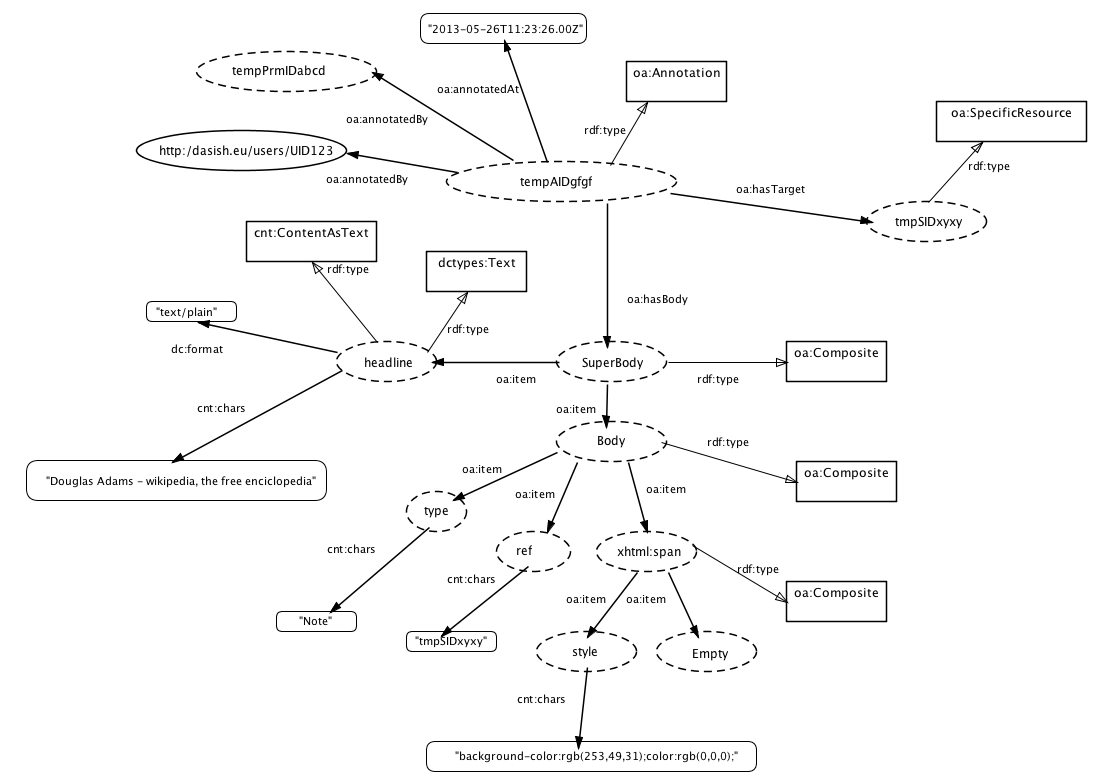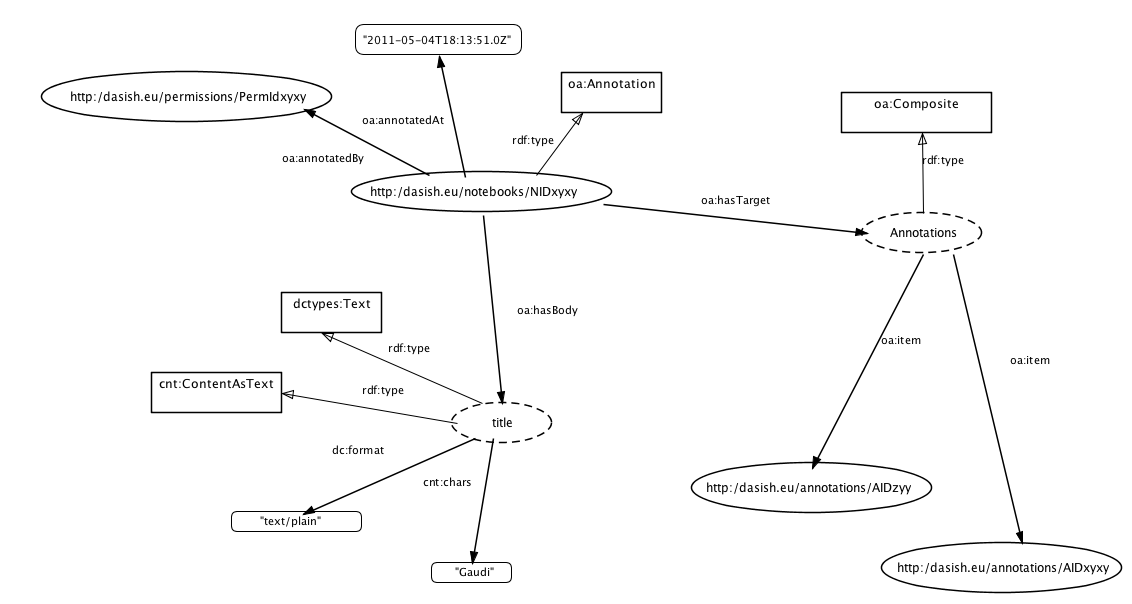Contents
Open Annotation Data Model
The aim of the current wiki-page is to show that annotations and related structures defined by DASISH xsd schema can be presented in "Open Annotation Data Model". Current (at time of writing) "Open Annotation" requirements can be found at http://www.openannotation.org/spec/core.
In the current page we refer to several images which are open-annotation representations of DASISH xml examples. The reader is encouraged to consult these images while reading the text. The dashed ovals in the images depict unresolvable uris, whereas the ovals with solid contours depict resolvable uris.
Target Sources
Single target sources are represented as instances of oa:SpecificResource. Example:
Multiple target sources are represented as instances of oa:Composite. Each of oa:item of the composite is either an instance of oa:SpecificResource or oa:Composite.
Cached Representations
A cached representation of a source (as oa:SpecificResource) is referred via the source's state, see the figure above. The properties oa:hasState and oa:cachedSource are used. The metadata of the cached representation are presented via dc-properties and dctypes:
mimeTypeis presented as dc:format,
toolis presented as dc:publisher,
typeis presented as dc:description; note that dc:type cannot be used here because its value must (recommended) be from the DCMI Type Vocabulary; therefore, e.g. "screenshot" would not be a good value here.
Moreover, a cached representation must have one of the dctypes as rdf:type, and it must be compliant with dc:format value. For instance, if dc:format is "image/png" then the corresponding rdf:type must be dctypes:Image.
Users
A user or a group of user is an agent, and for agents "Open Annotation" standart recommends to use foaf namespace, see http://xmlns.com/foaf/spec/. This data model is designed for social networks, and in principle suits DASISH schema for a user and permission lists. There is one little technical inconvenience: foaf agents do not have a property which can be used to define permission types (owner, reader, writer) directly. For now, permissions are represented via property foaf:topic_interest. Example:
Bodies
An annotation body in DASISH can be any correct xml. A generic way to present such bodies in "Open Annotation" is to consider a body, which (typically) has attributes and elements, as instances of oa:Composite. Any element and any attribute of the body becomes an oa:item of the body. If an element has sub-elements, it is an instance of oa:Composite as well, etc. An attribute or an element with now sub-elements has one of the dctypes and one of the dc:formtats, and possibly additional relevant properties, such as cnt:chars for text values. Example of an annotation with its properties and the detailed body:
Another example:
Headlines
Any DASISH annotation contains a text element called headline. There is no direct way to represent such a headline in Open Annotation Data Model. In DASISH presentation it is an oa:item of a "big" body, called SuperBody which is an instance of oa:Composite. Another item of SuperBody is the actual body of the annotation.
Notebooks
Open Annotation does not define structures like "notebook" or "annotations collection", or similar. Nevertheless, a notebook can be presented as an annotation which body is title and target Annotations is an instance of oa:Composite. Any annotation in the notebook becomes an oa:item of Annotations. Example:
Attachments (5)
- users.png (43.1 KB) - added by 11 years ago.
- notebooks.png (72.2 KB) - added by 11 years ago.
- source.png (85.6 KB) - added by 11 years ago.
- annotation.png (115.2 KB) - added by 11 years ago.
- AnnotationUGOT.png (99.9 KB) - added by 11 years ago.
Download all attachments as: .zip





